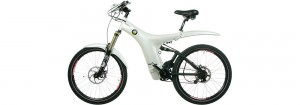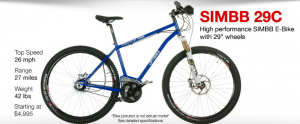When in the market for an electric bicycle (or ebike), many are surprised at the wide range of options available to them. Advancements in technology mean more variation in the types of ebikes available today, each with a unique set of specifications and performance features determining which is right for an individual rider. Other important considerations factor themselves into the equation, and with this being a relatively new industry, the purchasing decision can become a daunting one.
Here at Optibike, we manufacture the best electric bikes on the market, and as part of our blog series centered on founder Jim Turner’s “Electric Bike Book”, we want to help you make an informed decision. We begin our series with some clarification on the types of electric bikes available, them move into perhaps the most important purchasing consideration, how you plan on using your electric bike.
So, what exactly is an electric bicycle? When you mention the term to the uninitiated, there is bound to be some confusion. Ask around, and you will notice that among different persons, the term “electric bike” has various meanings and connotations. An ebike is actually a human-electric hybrid. The key elements are a bike with a battery, a motor and some type of means to adjust power. According to U.S. federal regulations, true electric bicycles are defined as weighing less than 100 pounds, with functioning pedals, an electric bicycle motor with less than 750 watts (one horsepower), a battery and a maximum speed without pedaling of 20 mph. This is to differentiate them from electric scooters and motorcycles.
 When you are looking to buy, ebikes fall into two broad classifications, pedal-assist (called pedalecs) and throttle-assist (called power-on-demand). Pedalecs lack a throttle, instead using pedal input from the rider to control the electric motor. In other words, when you pedal, the motor adds a certain amount of power that is adjustable. For this reason, they are somewhat limited in terms of power and speed. The fastest electric bicycles with the longest range are power-on-demand varieties. You control the power at will via the throttle with no pedal input required from the rider.
When you are looking to buy, ebikes fall into two broad classifications, pedal-assist (called pedalecs) and throttle-assist (called power-on-demand). Pedalecs lack a throttle, instead using pedal input from the rider to control the electric motor. In other words, when you pedal, the motor adds a certain amount of power that is adjustable. For this reason, they are somewhat limited in terms of power and speed. The fastest electric bicycles with the longest range are power-on-demand varieties. You control the power at will via the throttle with no pedal input required from the rider.
The best electric bikes deliver a fun, liberating riding experience, whose design and style options are limited only by individual tastes and rider needs. Our ebike company ranks the most important initial purchasing consideration as being “intended use”. How do plan on using the new electric bicycle you’re in the market for? Whether new to the technology, or a seasoned rider, here is a list of questions to be asking yourself before making any purchase.
-
Will you be using your bike on a daily basis or less frequently?
-
What are your range requirements?
-
Will you be primarily riding on flat terrain, hills or a combination?
-
What are your battery recharging options during use?
- What is your weight and physical ability?
- What speeds to you want to travel at?
-
Will you use your electric bike more for commuting purposes or recreationally?
How you intend to use your electric bike, and a combination of other variables such as rider weight, riding style and desired speed are all determining factors in selecting the ebike that is right for you. These performance criteria are driven by the two most important technological features driving today’s modern electric bicycles, motor drive systems and batteries, which we will explore in greater detail in the next post in our series of blogs. So, stay tuned!
Want to learn even more? Jim Turner, Founder and President at Optibike, has authored an informative and entertaining look at the rapidly expanding world of electric bicycles. Get your free copy of the eBook today.


